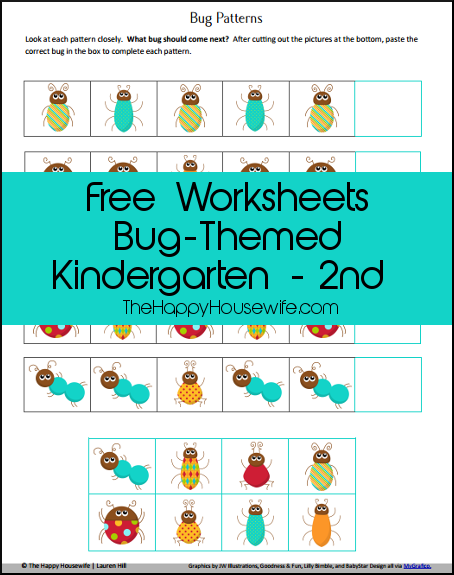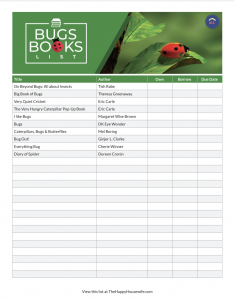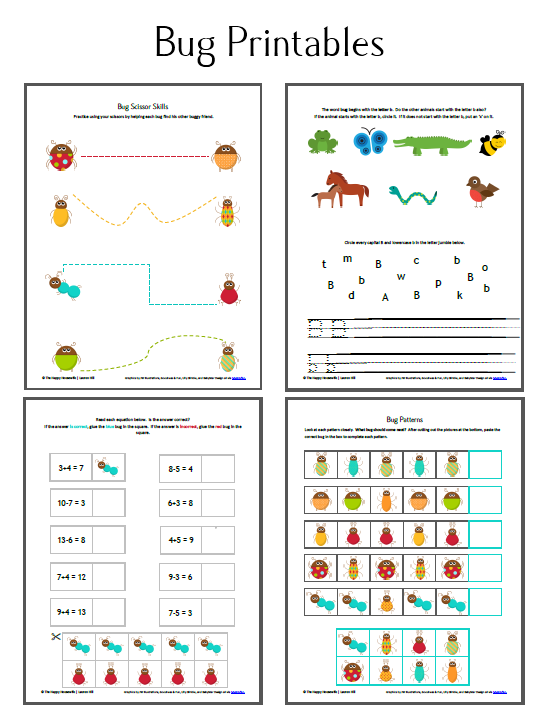This month’s homeschooling theme is: Bugs! Kids love bugs, even if parents don’t! A bug unit study is so much fun, your kids won’t even know they’re doing school! Plus they are EVERYWHERE. Especially in the spring and summer months.
Did you know that insects are super important to the health and well-being of our environment? It’s true! Take gardening for instance. While there are many insects that can damage vegetables and flowers, some can be really good for your garden.
Ladybug Habitat
One of our favorite activities to do each summer is to raise ladybugs and release them into our garden to help protect our tomato plants from aphids. Ladybugs are amazing. These little beetles prey on tiny plant-eating pests like aphids. In fact, ladybugs can eat as many as 5,000 aphids in a year!
Can you imagine eating that many cheeseburgers in one year? Whew!
Do you have a garden at home? If you’re interested in raising ladybugs, I highly recommend the Ladybug Land kit from Insectlore. It comes with a habitat, food, and a certificate to order larvae so you and your kids can watch them go through the process of metamorphosis.
Ladybug Land is reasonably priced and you can get it on Amazon or elsewhere. You send off a card for the ladybug larvae or they can be ordered online. Insect Lore was easy to deal with, and even when our ladybug larvae arrived in less than the best shape, we were able to get replacements in a hurry. (This was through no fault of the company. Our weather was unseasonably warm the week they arrived.)
The ladybug larvae were easy to take care of and fascinating to all my children. While my oldest sons were the ones taking care of the ladybugs, everyone got to share in the experience as we watched the ladybugs change from larvae to adult beetles. It was something they’d read about but hadn’t seen before. The process does take a few weeks but was fast enough to keep even my preschoolers interested. The larvae tube has all the food the little insects need, and you just add a little water.

Fully grown ladybugs, ready to be freed into the backyard.
Ladybug Land was budget friendly compared to other options. I loved that the habitat was reusable, and we’ve even repeated the experience since and enjoyed it just as much as the first time.
If you’d rather attract ladybugs to your garden naturally, try making a simple ladybug lair using this activity from my book, Hands-On Ecology: Real-Life Activities for Kids.

How to Make a Ladybug Lair
Supplies Needed
- Oatmeal container or another round container with a lid
- Acrylic paint
- Polyurethane or spray sealer
- Craft knife
- Wire
Instructions
1. Decorate the container with acrylic paints and let dry.
2. Seal the container with polyurethane or an acrylic sealer.
3. Cut a small, thin window at the top of the container and a door at the bottom.
4. Hang the house from a tree using the wire.
If creating your own ladybug lair is not something you want to mess with but you still want to encourage ladybugs to eat pests in your garden, you can try a pre-made house instead. You can even order a big bag of ladybugs to populate the ladybug house instead of waiting around for new occupants to just show up.
Whatever you decide to do with your kids, introducing ladybugs to your garden is a great way to extend learning into the summer months. Be sure to talk about the insect’s life cycle using models or a simple nonfiction book, and then enjoy these friendly insects with your kids.
Favorite Bug Books
The library is filled with amazing books about bugs! Download this free library list and visit your local library to learn more about creepy crawly bugs.
These bug worksheets are perfect for the younger students. Use them along with your experiments and crafts.

In this bug-themed worksheet set you’ll find:
- Practice the Letter B – Choose the other animals with the same /b/ sound; identify B and b from the letter jumble; practice writing B and b
- Bug Patterns – In this cut & paste activity, determine which bug comes next in the pattern.
- Scissor Skills – Practice scissor skills by helping the bug find his buggy friend.
- Bug Math – Identify (with bugs of course) if the addition/subtraction equation is correct.




